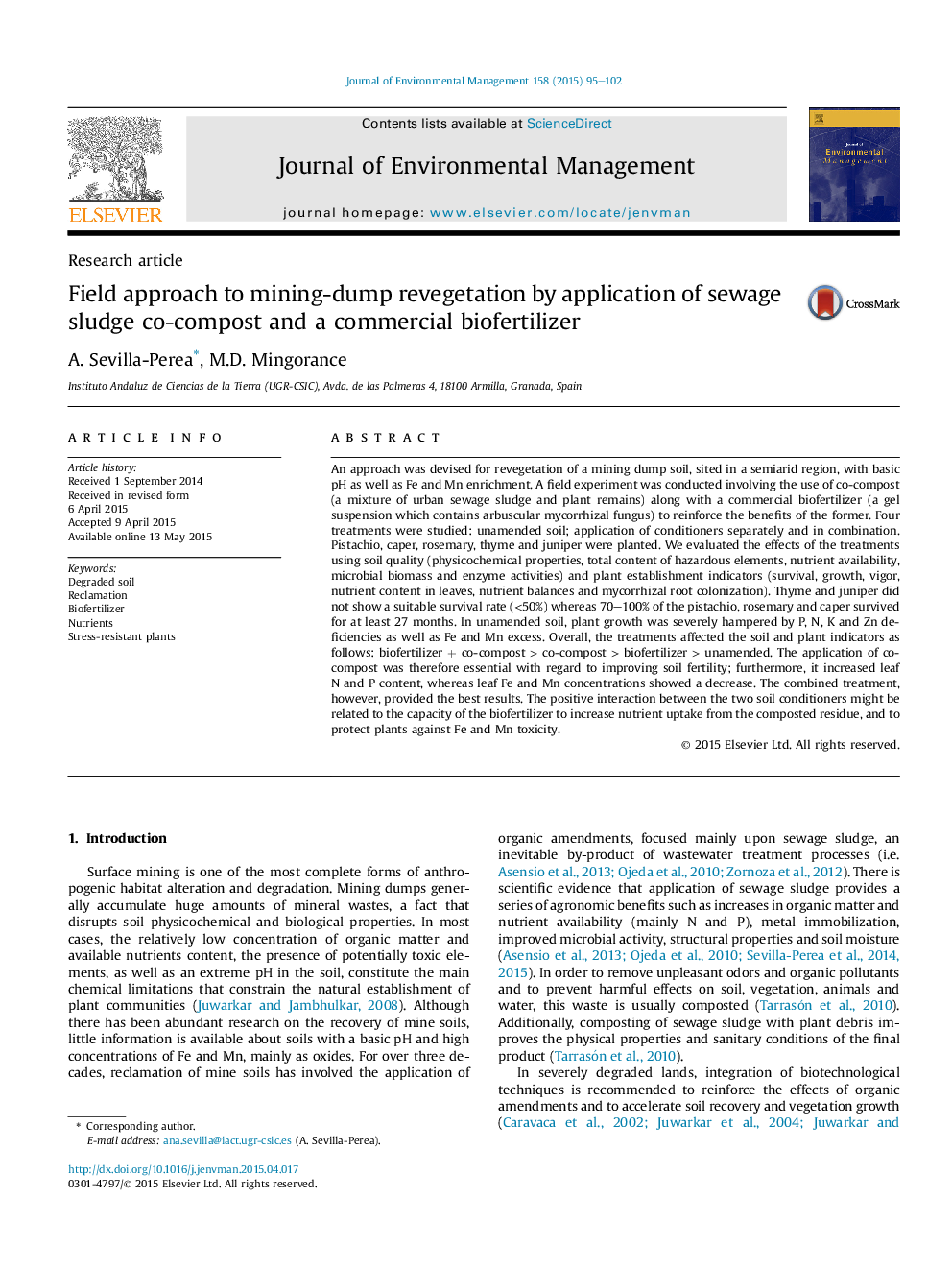| کد مقاله | کد نشریه | سال انتشار | مقاله انگلیسی | نسخه تمام متن |
|---|---|---|---|---|
| 1055583 | 1485254 | 2015 | 8 صفحه PDF | دانلود رایگان |
• Nutrient deficiencies and Fe and Mn excesses severely limit plant growth in the dump.
• Rosemary, caper and pistachio showed high tolerance to low soil quality.
• Co-compost enhanced soil habitat function and nutrient cycles, and reduced Fe and Mn toxicity.
• Co-compost plus biofertilizer showed a higher potential to remediate mining dump soils.
An approach was devised for revegetation of a mining dump soil, sited in a semiarid region, with basic pH as well as Fe and Mn enrichment. A field experiment was conducted involving the use of co-compost (a mixture of urban sewage sludge and plant remains) along with a commercial biofertilizer (a gel suspension which contains arbuscular mycorrhizal fungus) to reinforce the benefits of the former. Four treatments were studied: unamended soil; application of conditioners separately and in combination. Pistachio, caper, rosemary, thyme and juniper were planted. We evaluated the effects of the treatments using soil quality (physicochemical properties, total content of hazardous elements, nutrient availability, microbial biomass and enzyme activities) and plant establishment indicators (survival, growth, vigor, nutrient content in leaves, nutrient balances and mycorrhizal root colonization). Thyme and juniper did not show a suitable survival rate (<50%) whereas 70–100% of the pistachio, rosemary and caper survived for at least 27 months. In unamended soil, plant growth was severely hampered by P, N, K and Zn deficiencies as well as Fe and Mn excess. Overall, the treatments affected the soil and plant indicators as follows: biofertilizer + co-compost > co-compost > biofertilizer > unamended. The application of co-compost was therefore essential with regard to improving soil fertility; furthermore, it increased leaf N and P content, whereas leaf Fe and Mn concentrations showed a decrease. The combined treatment, however, provided the best results. The positive interaction between the two soil conditioners might be related to the capacity of the biofertilizer to increase nutrient uptake from the composted residue, and to protect plants against Fe and Mn toxicity.
Journal: Journal of Environmental Management - Volume 158, 1 August 2015, Pages 95–102
